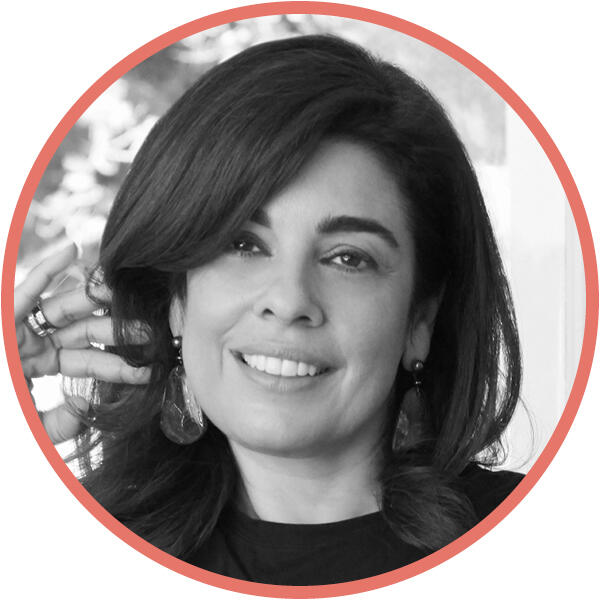When Los Angeles designer Natasha Baradaran began her career, she thought versatility was the greatest achievement. But when she summoned the confidence to embrace—and commit to—her own point of view, her business catapulted forward.

As you look back, what changes did you need to make in your business to truly achieve success?
I started my career in hospitality about 25 years ago, when there was a different design guard. I was lucky to work in a fairly big Dallas-based office, Wilson and Associates—they’ve closed down now, but at the time, they had about 35 people and they were one of the big hospitality design firms. I was an apprentice for the designers who did The Peninsula Beverly Hills and Montage Laguna Beach. My main project was The Mansion at the MGM Grand in Las Vegas, which cost the most per square foot anyone had ever spent in hospitality at the time. Beyond being exposed to people who I think were true masters, I learned through those experiences that being a good interior designer means that you can do whatever the client says they want.
When I left the firm, there was a Tuscan and Mediterranean aesthetic here in Los Angeles, and I could do that. I was hired to design an Asian contemporary home in Montecito, and I could do that. It was wonderful, and my business saw steady growth. Then, about 10 years ago, I began working with [Los Angeles–based design talent agent] Sean Yashar when I was thinking about starting a furniture collection. One of the first things he said to me was, “You seem like you’re talented, and you are seeing incremental growth. But if you really want to go where you want to go—I don’t know what you’re all about. Like, what is it that you do? What is your signature?” It was shocking, because I was so proud that I could be all things to all people.
How did that moment start to shift your perspective?
I kept thinking, “How could I be in this business—for 15 years at that point—and not be able to answer that question?” He suggested that I try making six pieces that define who I am, and to think of it as a capsule collection. If it worked, great. And if not, I’d put them in my house because they would be what I liked anyway. It was an aha moment, and for the first time I created things that were not in the marketplace.
What those six pieces did was take the training wheels off. If you don’t have a client, an architect or a budget, you can’t blame any of those things. It’s just your true, authentic self. For me, it was about exploring materiality without parameters, and really looking at furniture as being more sculptural. The showrooms really liked the pieces. But more than that, I suddenly knew that I needed to bring my own voice into my designs—and maybe not everyone would like it, and that was OK. Everything changed once I was passionate about my firm’s point of view—when I stood out and said, “This is what I can do.” Clients with big projects who wanted my perspective started to fall in my lap, and my business completely turned.
Could you have gotten there without Sean asking you what you were about?
No. When he said that to me, I was like, “What do you mean?” But the fact that I was having a hard time answering the question meant something. Sometimes I think you can be [so deep] in it—day in, day out, we’re all working so hard and at such a fast pace, just trying to get through he project with a happy client. To see it in a new way was transformative for me.
How did you strip away all of the things that you knew how to do well to find your own point of view?
It was really a self-confidence thing. At the time I was almost 40, and I was really coming into my own as a woman. Instead of worrying so much—like, “Are they going to love every single thing?”—I started trusting that if I pull these things together, they’re going to love the end product. I focused more on the big-picture view rather than thinking, “They have to love the trim on this pillow,” or the chair finish, or what have you. And they were happy. How did you know you were on the right track? It really came from the furniture collection being so well received. I was represented in L.A., Dallas, Chicago and New York from the get-go, and in really great showrooms, even with just six pieces. Then I started to see designers I really respect, like Michael Smith and Ken Fulk, who, when they could choose anything, were appreciating my point of view. I remember thinking, “OK, why do I need this validation?” But for some reason, I did. It helped me see that I should trust my voice.I know it’s hard for younger designers to have that confidence—especially because many of them are self-funded like I am. It’s not like someone gave me something to start it up, or that any of my product lines are licensed. They all come from me. It’s very hard to take risks when you’re working that way—to think, “I’m a little different. Is anyone going to get it?” But once I started going down that path and getting some initial success, that really snowballed for me.
Homepage image: In this project, sleek architectural details pair seamlessly with a sofa and bench from the Los Angeles–based designer’s collection | Courtesy of Roger Davies




































